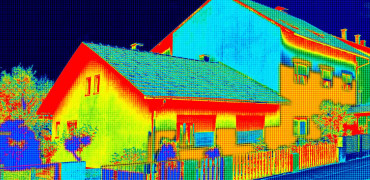It’s no use relying on world leaders at the moment if you want to bring about the changes required that pave the road to a renewable future.
If you’re looking for inspiration, look no further than our social and affordable housing sectors, who are currently doing more to promote renewable energy than our government.
Extensive renovations began at No 9 Downing Street began last year, sparking a great deal of controversy within the sector.
As a result of the criticism made by opposition MPs on the measly 1% pay rise for NHS workers, a freedom of information request was made by the Press Association, revealing that the renovation costs have totalled a whopping £2,607,767, largely excluding VAT.
This highlights the need for the private housing sector to play catch-up.
A missed opportunity
However, sadly it appears that the government missed the opportunity to champion renewable technology and energy efficient renovation methods throughout the project.
Works were predominantly aesthetic; the renovations were so that No 9 can host televised White House-style press briefings and come alongside with a separate £200,000 renovation project on Boris Johnson’s official residence at No 11. This leads critics to label the works as a vanity project.
…Was £2,607,767 of taxpayers’ money just spent on a movie set?
The Cabinet Office said the amount reflects that No 9 is a Grade I-listed building, with £1,848,695.12 for “main works”, £198,023.75 on “long lead items” and £33,394.63 on “broadband equipment”.
Perhaps converting the official residence of the Prime Minister and his offices so that they run on renewable energy would have sent out a more positive message to the people of Britain? After all, this is something that has been promoted heavily by the social and affordable housing sectors for years now.
Promoting a healthy message
Housing association homes are more energy efficient than any other sector. The typical housing association home is significantly more energy efficient than the average home across England.
With an average Standard Assessment Procedure (SAP) rating of 66, the typical housing association home lies more than seven SAP points above owner occupied and private rented stock.
Housing association stock is also slightly more energy efficient than local authority stock.
This is because housing association homes are built to or have been upgraded to a higher energy efficiency standard than the average English home when it comes to elements such as wall insulation, double glazing, loft insulation or boiler type.
A downwards trend
According to the ONS, as of April 2018, there were about 5 million houses in the social sector in the UK.
The long-term historic trend has been a decrease in the size of the social sector.
In the late 1970s the social sector represented 33% of all housing in England, Scotland and Wales.
The reduction has been driven by an increase in sales (which is discussed in the Sales section of this article) and, to a lesser extent, a reduction in building of new affordable housing.
The percentage of homes in the social sector in the UK has remained relatively constant since 2008, averaging at a sixth of all homes (17%).
Great strides
Whilst we still need to get the numbers up in terms of volume of social and affordable housing, great strides have been taken in recent years with regards to their performance and energy efficiency.
Its great news that social and affordable housing is leaps and bounds ahead of any other sector in reducing its carbon footprint and cleaning up its act.
However, it does highlight the need for the private housing sector with its existing ageing stock to play catch-up.
In England and in Wales, EPC data shows that the estimated CO2 emissions for existing houses were more than twice the level of those for new houses.
The data even suggests that CO2 emissions for existing houses are equivalent to the emissions of more than two new houses combined and that energy cost per year for an existing house is more than twice as much as that estimated for a new house.
What can be done?
So much has been done already within the social and affordable housing sectors to meet modern demand in terms of efficiency.
Good quality and energy efficient homes have many positive impacts on people’s lives. They support better physical and mental health, which in turn saves money to the public purse and the NHS.
A warm home results in lower energy bills and a higher disposable income available to households and individuals. Well-maintained homes mean lower repair costs and higher tenant satisfaction.
This is undeniably playing a huge role in reducing Britain’s overall carbon footprint.
But we cannot do it alone. The private housing sector needs to follow suit, and that means that government need to incentivise the shift towards renewables.
This is done through schemes such as the deceased Green Deal and the Green Homes Grant, not through vanity projects such as the renovation at No 9.
Government would do well to think on that and take guidance from those spearheading the necessary change towards renewables.
Although it sounds dramatic, our future could well depend upon it.
Joe Bradbury is Digital Editor of HA magazine




